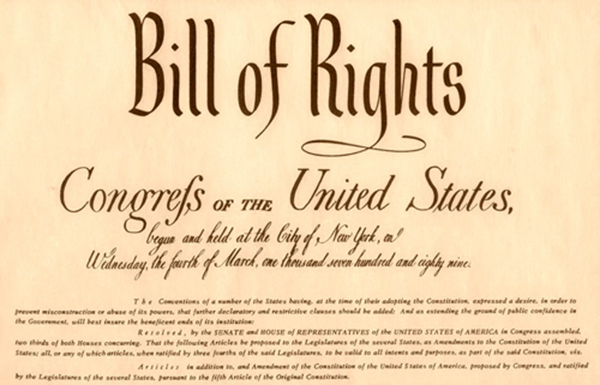The first ten amendments to the U.S. Constitution are known as the Bill of Rights. Here is a brief history and description of those amendments.
The first ten amendments to the United States Constitution are known as the Bill of Rights. These ten amendments were integral to the ratification of the Constitution, as some of the states would not have accepted the new Constitution without them. The Bill of Rights places specific restrictions on the government and guarantees certain liberties to the citizens of the United States.
The Origin of the Bill of Rights
From 1781 until the Constitution was ratified in 1788, the newly formed United States had a very different form of government under the Articles of Confederation. Under the Articles, there existed a very weak central government which left most power to the individual states. The central government was unable to raise taxes, regulate trade, or wage a war. The weakness of the central government was intentional, as the newly independent Americans feared the taxation and oppression which could come from a strong central government.
Soon, however, it became apparent that the government was too weak, and that the new nation could not function under the Articles of Confederation. So, in 1787, all of the states except for Rhode Island, which was opposed to revisions to the Articles or a new constitution, sent delegates to Philadelphia to come up with something new. The created the Constitution, which then required ratification by nine states before it could be put into place.
Five states ratified the Constitution by January of 1788, but ratification by the others was very uncertain, because many worried that the new Constitution gave the government too much power. As a result, most of the remaining states requested that a bill of rights be included, in order to place restraints on the government and protect individual freedoms. After being promised such a bill of rights, the Constitution was ratified in 1788. Then, in 1791, the first ten amendments to the Constitution, the Bill of Rights, was also ratified.
Summary of the Bill of Rights
- The First Amendment: Guarantees freedom of religion, speech, and the press, and the right to assemble and to petition the government
- The Second Amendment: Guarantees the right to bear arms
- The Third Amendment: Deals with the quartering of troops
- The Fourth Amendment: Protects citizens from unreasonable search and seizure
- The Fifth Amendment: Guarantees right to grand jury, due process of law, and protection from self-incrimination and double jeopardy
- The Sixth Amendment: Guarantees, in criminal trials, the right to speedy and public trial by jury, right to counsel, and right to confront accusers
- The Seventh Amendment: Guarantees right to jury in common law suits
- The Eighth Amendment: States there shall be no excess bail or fines and no cruel or unusual punishment
- The Ninth Amendment: Deals with non-enumerated rights
- The Tenth Amendment: Says that powers not given to the federal government by the constitution are reserved for the states
Continuing Importance of the Bill of Rights
Originally, the Bill of Rights was intended only to place restrictions on the federal government. Since then, however, it has also been applied to state and local governments under the Fourteenth Amendment. The Fourteenth Amendment was put in place after the Civil War, in order to prevent oppression of the newly freed slaves by the states. Most recently, on June 28, 2010, the U.S. Supreme Court effectively struck down a handgun ban in Chicago and extended gun rights nationwide in the case of McDonald v. Chicago, using the Second and Fourteenth Amendments as justification.
The Bill of Rights has always been and continues to be a very important part of the U.S. Constitution. In the words of Thomas Jefferson, they are, “what the people are entitled to against every government on earth.”








